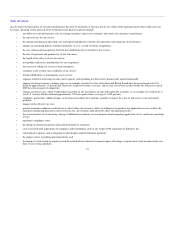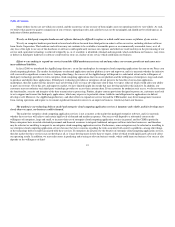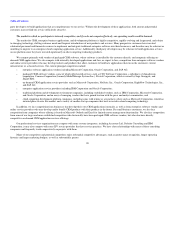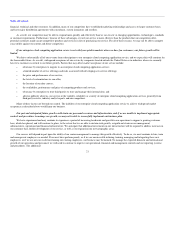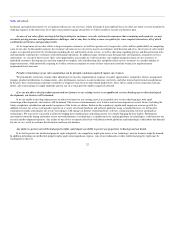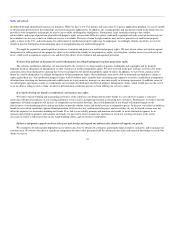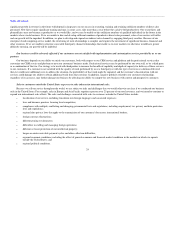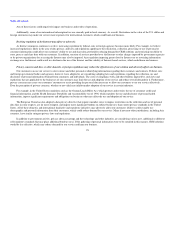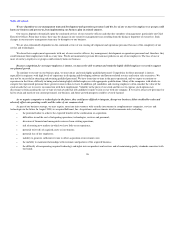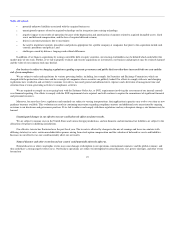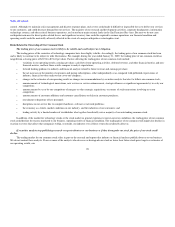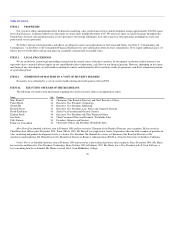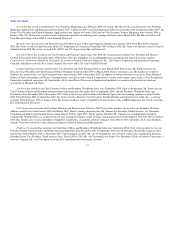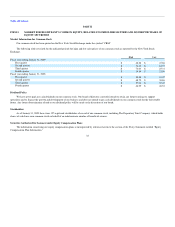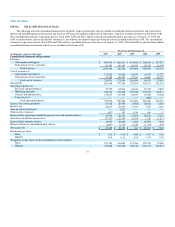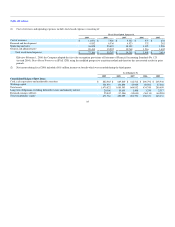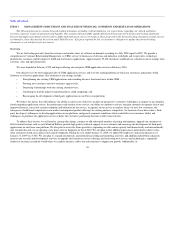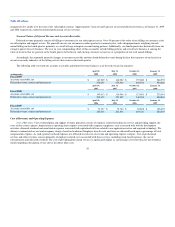Salesforce.com 2008 Annual Report Download - page 31
Download and view the complete annual report
Please find page 31 of the 2008 Salesforce.com annual report below. You can navigate through the pages in the report by either clicking on the pages listed below, or by using the keyword search tool below to find specific information within the annual report.
Table of Contents
control. Although we maintain crisis management and disaster response plans, such events could make it difficult or impossible for us to deliver our services
to our customers, and could decrease demand for our services. The majority of our research and development activities, corporate headquarters, information
technology systems, and other critical business operations, are located near major seismic faults in the San Francisco Bay Area. Because we do not carry
earthquake insurance for direct quake-related losses, and significant recovery time could be required to resume operations, our financial condition and
operating results could be materially adversely affected in the event of a major earthquake or catastrophic event.
Risks Related to Ownership of Our Common Stock
The trading price of our common stock is likely to be volatile and could subject us to litigation.
The trading prices of the securities of technology companies have been highly volatile. Accordingly, the trading price of our common stock has been
and is likely to continue to be subject to wide fluctuations. For example, during the year ended January 31, 2009, the trading price of our common stock has
ranged from a closing price of $21.96 to $74.43 per share. Factors affecting the trading price of our common stock include:
• variations in our operating results, earnings per share, cash flows from operating activities, deferred revenue, and other financial metrics and non-
financial metrics, and how those results compare to analyst expectations;
• forward looking guidance to industry and financial analysts related to future revenue and earnings per share;
• the net increases in the number of customers and paying subscriptions, either independently or as compared with published expectations of
industry, financial or other analysts that cover our company;
• changes in the estimates of our operating results or changes in recommendations by securities analysts that elect to follow our common stock;
• announcements of technological innovations, new services or service enhancements, strategic alliances or significant agreements by us or by our
competitors;
• announcements by us or by our competitors of mergers or other strategic acquisitions, or rumors of such transactions involving us or our
competitors;
• announcements of customer additions and customer cancellations or delays in customer purchases;
• recruitment or departure of key personnel;
• disruptions in our service due to computer hardware, software or network problems;
• the economy as a whole, market conditions in our industry, and the industries of our customers; and
• trading activity by a limited number of stockholders who together beneficially own a majority of our outstanding common stock.
In addition, if the market for technology stocks or the stock market in general experiences uneven investor confidence, the trading price of our common
stock could decline for reasons unrelated to our business, operating results or financial condition. The trading price of our common stock might also decline in
reaction to events that affect other companies within, or outside, our industry even if these events do not directly affect us.
If securities analysts stop publishing research or reports about us or our business or if they downgrade our stock, the price of our stock could
decline.
The trading market for our common stock relies in part on the research and reports that industry or financial analysts publish about us or our business.
We do not control these analysts. If one or more of the analysts who do cover us downgrade our stock or lower their future stock price targets or estimates of
our operating results, our
28


